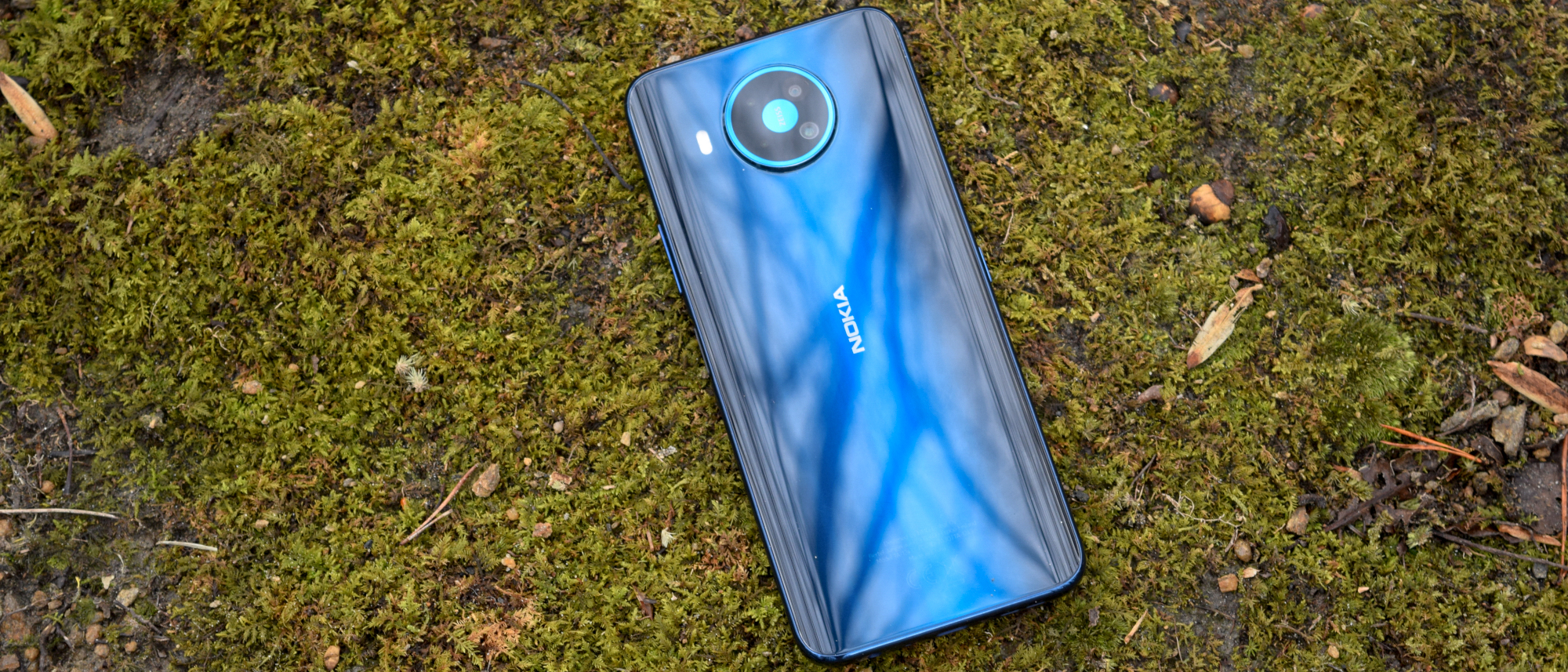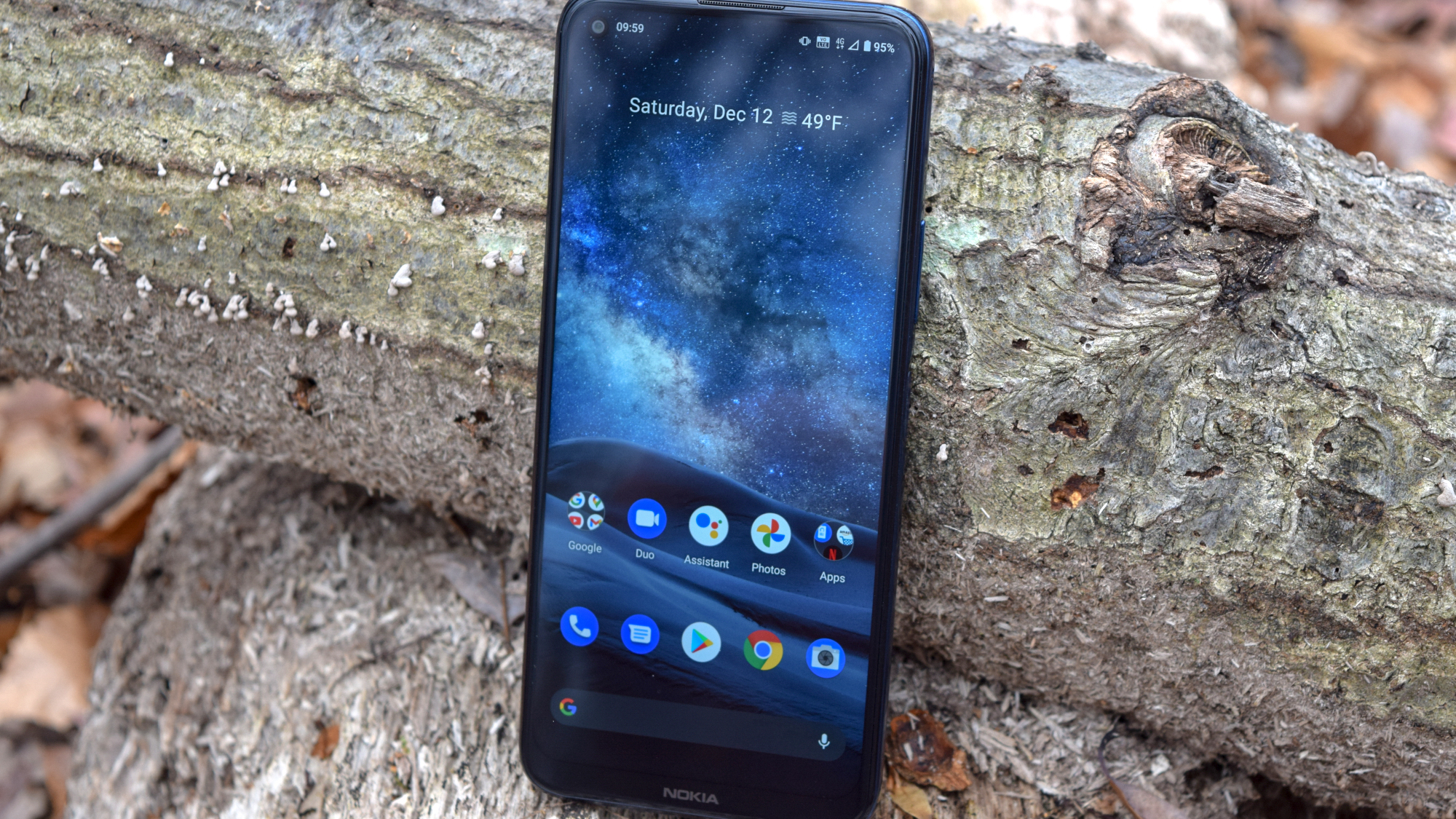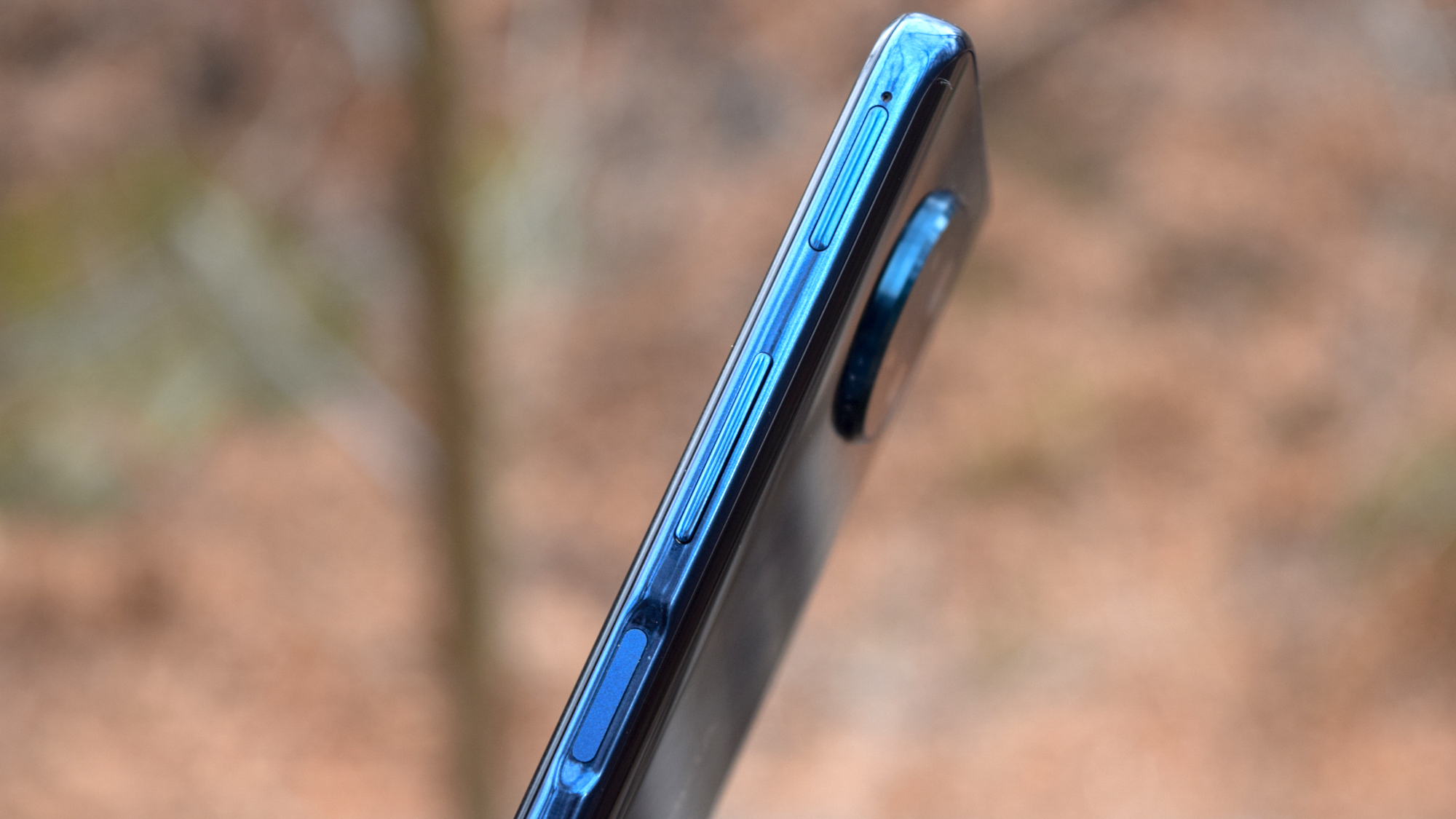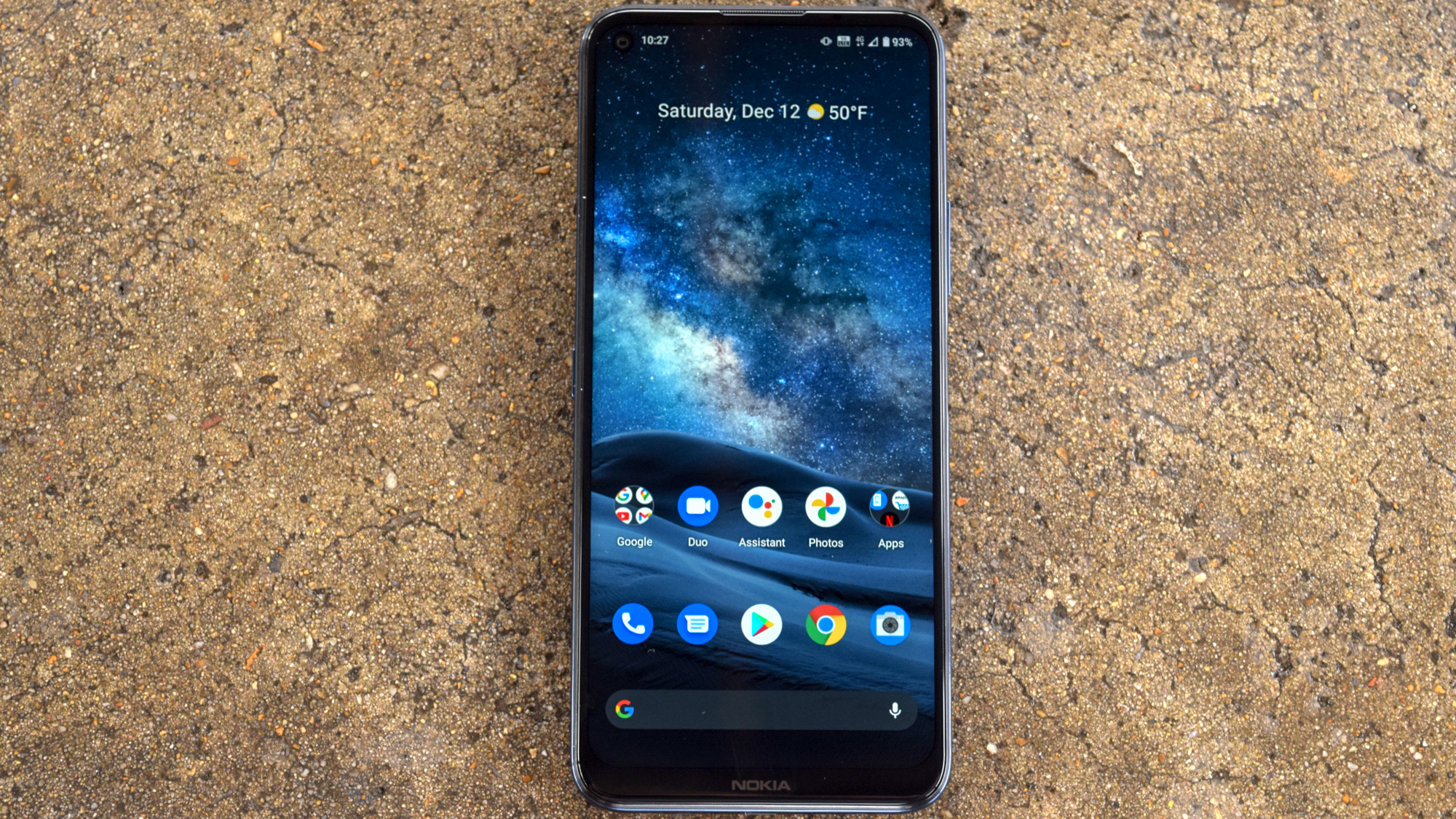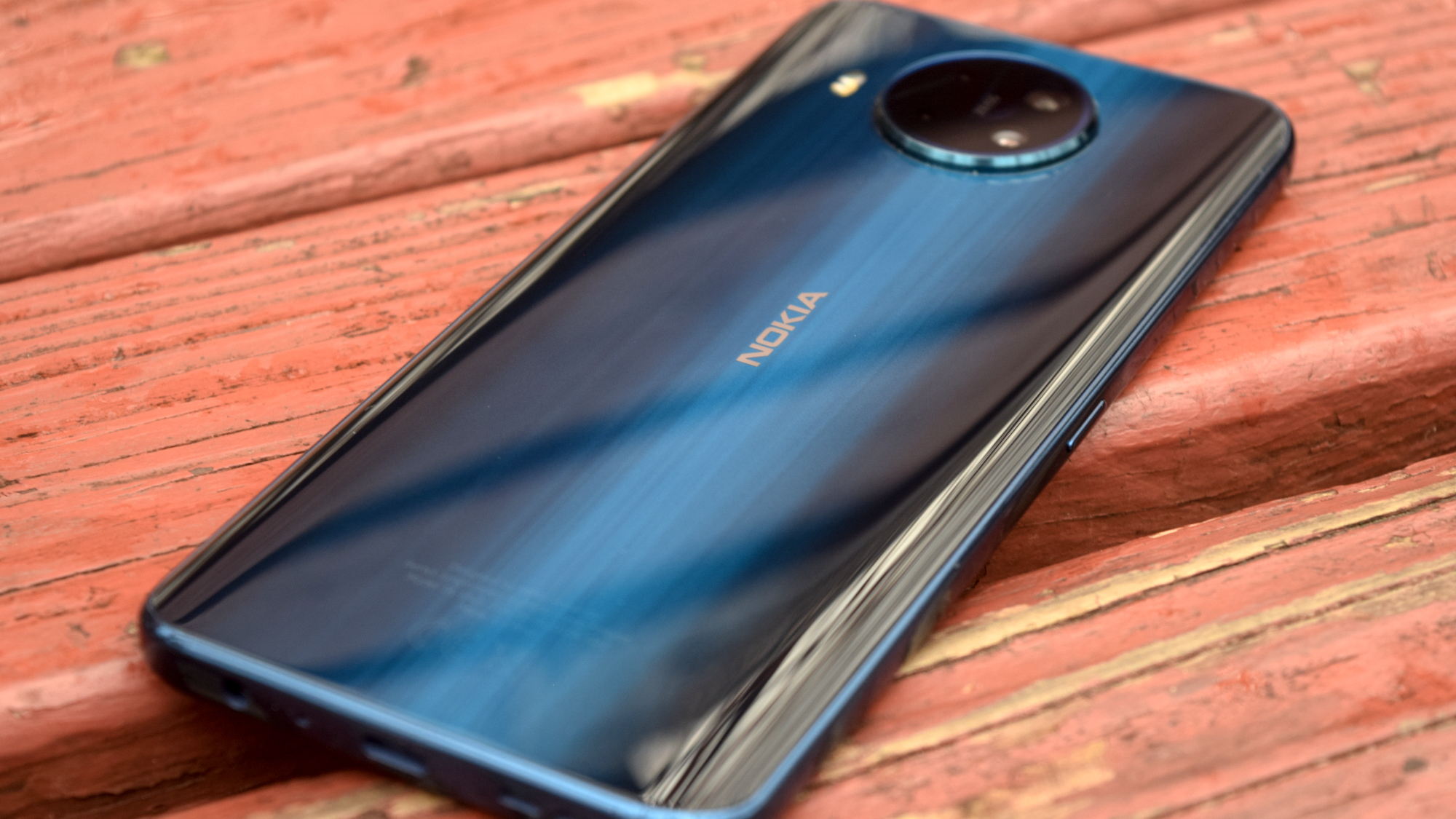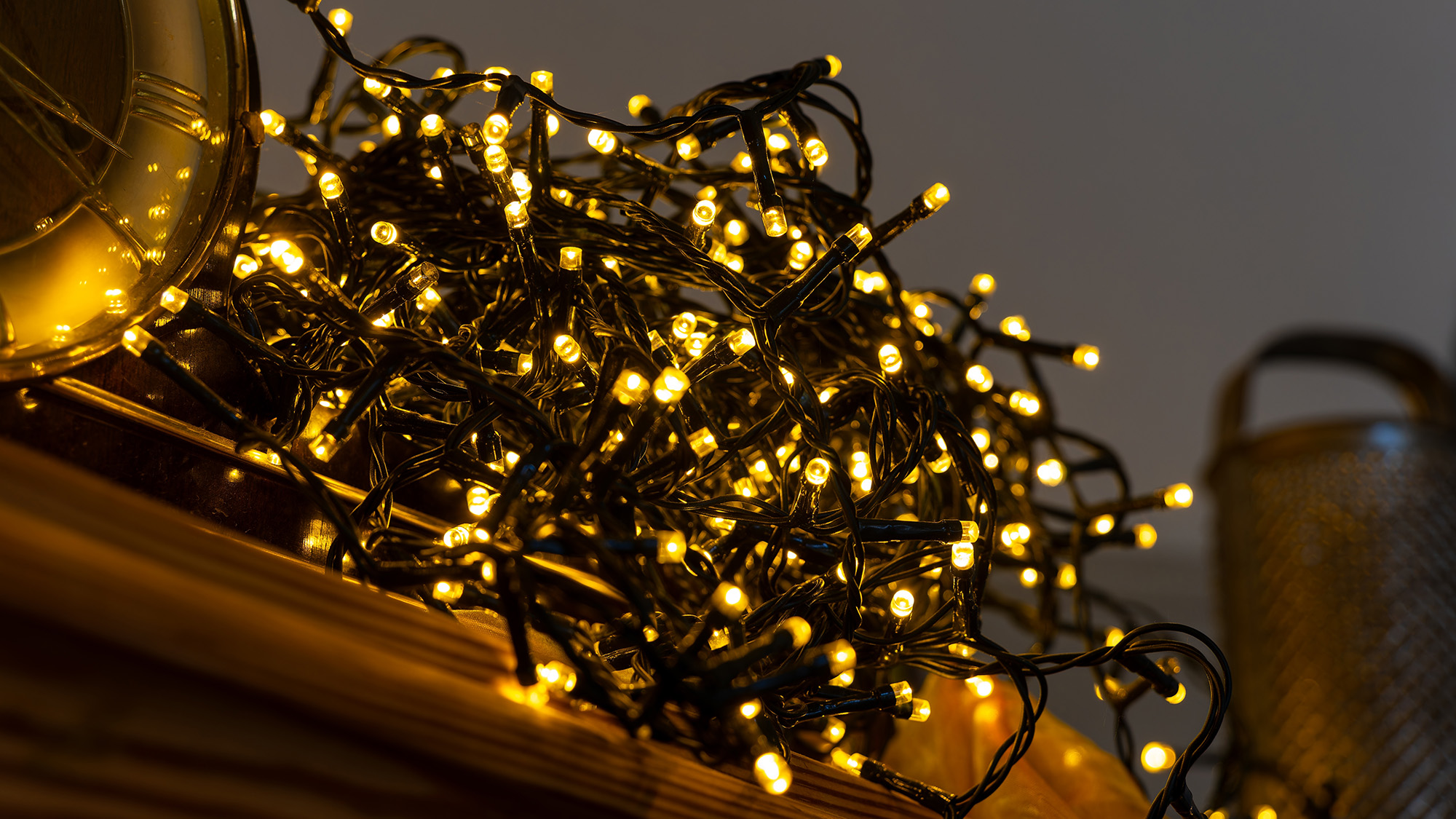Tom's Guide Verdict
A decent price for some excellent hardware and software should make the Nokia 8.3 5G a better option than it feels like. But other phones like the Pixel 5, OnePlus 8 and Galaxy S20 FE offer more for the same price.
Pros
- +
Smooth performance
- +
Stellar battery life
- +
Headphone jack
- +
Competitive price
Cons
- -
Mediocre cameras
- -
Bulky
- -
Subpar speaker
Why you can trust Tom's Guide
Price: $699
Display: 6.81-inch LCD (2400 x 1080; 60Hz)
CPU: Snapdragon 765G
RAM: 8GB
Storage: 128GB
Rear cameras: 64MP main (f/1.9); 12MP ultrawide (f/2.2); 2MP macro; 2MP depth
Front camera: 24MP (f/2.0)
Battery size: 4,500 mAh
Size: 6.8 x 3.1 x 0.35 inches
Weight: 7.76 ounces
Recent months have seen an explosion in the number of $699 phones that balance some premium features with prices well below what you’d pay for a flagship device. Include the Nokia 8.3 5G in that group. Like its fellow $699 phones, this device built by HMD Global offers a reliable processor and a list of other specs that, on paper, seem quite competitive for the asking price. It certainly offers a better bang for buck than the Nokia 7.2.
And yet to my dismay, I don’t like the Nokia 8.3 5G. Sure, there are some clear positives to go with that affordable price. But with so many other similarly priced phones on the market, our Nokia 8.3 5G review revealed an ultimately lackluster device that doesn’t offer anything truly special to stand out from the crowd. Lacking some features that others have for the same cost makes it very forgettable.
Note that there are actually two 5G phones carrying the Nokia 8 name — this model and the Nokia 8 V 5G UW, which is an identically priced version retooled to work with Verizon’s high-speed 5G network. Other than that, these two Nokia 8 devices are essentially the same.
Nokia 8.3 5G review: Price and release date
HMD Global actually introduced the Nokia 8.3 5G nearly a year ago, though it didn’t reach the U.S. until very late in 2020. The $699 phone is available unlocked from Amazon as well as the Nokia website. That $699 gets you a phone with 128GB of storage — double the amount found in the Verizon version of this same phone — and 8GB of memory.
Over in the UK, you’ll fork over £499.99 for a 64GB/6GB variant and in Australia, you get the same specs as the US for AU$899.
As far as the US is concerned, the Nokia 8.3 5G faces fierce competition from the likes of the Pixel 5 ($699), the Galaxy S20 FE ($699), the OnePlus 8T ($749). But there are even cheaper 5G phones like the Pixel 4a 5G ($499) and Galaxy A71 5G ($599) that measure up well against the Nokia 8.3. That presents HMD Global with an uphill battle in trying to carve out a space for this device. And as we’ll see, it isn’t always successful.
Nokia 8.3 5G review: Design
I’ll just get the obvious out of the way. The Nokia 8.3 5G is a big phone — a real Oh Lawd He Comin’ on the Chonk Cat scale. I have large hands, and I can safely say that this is a two-handed device that’s difficult to stash in a pocket.
Get instant access to breaking news, the hottest reviews, great deals and helpful tips.
The Nokia 8.3 5G comes in at 6.8 x 3.1 x 0.35 inches and a weight of 7.76 ounces. For reference, the Samsung Galaxy Note 20 Ultra, a large device in its own right, measures 6.5 x 3 x 0.32 inches and weighs 7.34 ounces. So surprisingly, the Nokia 8.3 is the heavyweight of these two devices.
Beyond that, the Nokia 8.3 5G is a looker with a gorgeous deep blue finish on the back. It’s a fingerprint magnet, though, but when it’s wiped clean, it’s beautiful. I’ll hand it to HMD — they designed a really pretty phone that catches light wonderfully.
The round, Zeiss-branded quad camera module sticks out noticeably from the Nokia 8.3’s back, meaning the phone doesn’t lay flat when you set it down on a table. For some reason, this has always bugged me, but your level of irritation may vary.
Along the right side of the frame is the Nokia 8.3’s SIM/SD card tray, the volume rocker, and the power button, which doubles as the fingerprint sensor. Over on the left side is the Google Assistant button all by its lonesome. That’s an awkward placement that invites accidental presses, should you try to unlock the phone thinking you’re hitting the power button. It doesn’t help that both buttons are placed directly opposite of each other.
Over on the face of the Nokia 8.3 5G, there’s a hole punch cutout for the front-facing camera in the top left corner and a rather noticeable chin with a Nokia logo. I’m not a huge fan of the design direction here, especially with the comparatively large bottom bezel. Other phones in this price range minimize the chin, but HMD Global seemingly hasn’t gotten the memo.
The Nokia 8.3 5G lacks any kind of IP rating for water resistance, so be careful with it near water. There’s also no wireless charging, something similarly priced rivals such as the Pixel 5 offer.
My other disappointment with the phone physically is the mono bottom-firing speaker. It’s tinny and doesn’t sound good at all. Notifications and system sounds made me grit my teeth, so I set the phone to vibrate and forgot about it until I watched a YouTube video. Having come from using a Pixel 4 XL and its stereo speakers, I found the Nokia 8.3 5G’s audio rather underwhelming.
Don’t get me wrong, I mostly like the design of the Nokia 8.3 5G, even if it is a behemoth. Plus, there’s a headphone jack on the bottom next to the USB-C port, something a lot of phone makers forego these days. There are just some quirks or poor decisions in other parts of the design that left me scratching my head.
Nokia 8.3 5G review: Display
It’s the 6.81-inch 2400 x 1080 IPS LCD panel that makes the Nokia 8.3 5G so big. You get a 20:9 aspect ratio with a grand total of 386 pixels per inch, meaning that it’s not as sharp as a QHD display, though resolution will be fine for most people.
Colors are plenty vibrant with the display covering 142.5% of the sRGB color gamut. That’s more than the 128.8% covered by the Pixel 5 and about equal to the 140.6% covered by the LG Velvet, one of the more colorful displays we’ve seen among the $699 phones. Contrast on the Nokia 8.3 5G is pretty good, and the display’s brightness hit a maximum of 607 nits with adaptive mode turned on. That’s about equal with the 610 nits that the Pixel 5 managed. Overall, the Nokia 8.3 features a nice LCD panel, even if it lacks the punch of an OLED with noticeably weaker blacks to boot.
When discussing color accuracy, the Nokia 8.3 5G’s display hits a Delta-E score of 0.28 in our lab tests (where the lower score is best). That beats the Galaxy S20 FE’s 0.3 and the OnePlus 8T’s 0.29.
The big display is great for media consumption, especially gaming. Playing Xbox Game Pass titles such as Destiny 2 or Master Chief Collection was a joy especially with headphones hooked up. Dare I call the Nokia 8.3 5G screen immersive? I think so. It may not win awards, but it gets the job done with decent colors and good brightness.
The sad part about the Nokia 8.3 5G’s display is that the refresh rate is locked at 60Hz. If you haven’t experienced Android at higher frame rates before, I’d forgive you for not caring. But once you see a 90Hz screen like the Pixel 5’s or 120Hz like the Galaxy S20 FE, it’s really hard to forget how smooth scrolling is on those comparably priced phones.
Nokia 8.3 5G review: Camera
The Nokia 8.3 5G’s quad camera setup features a 64MP main shooter, a 12MP ultra-wide camera, a 2MP macro lens, and a 2MP depth sensor. Many of the images shot under well-lit conditions offer decent colors and detail. The ultrawide sensor is also fun and produces some good wide-angle pictures, perfect for large groups or landscape shots.
Only half of the camera array is useful, however, with the macro proving to be effectively pointless in comparison to a good zoom on the main lens. I also didn’t notice too much use of the depth sensor in my photos compared to what I captured with my Pixel 4 XL — if anything, the Nokia’s shots appear to lack depth in comparison to the Pixel’s pictures.
You can see some real differences between the Nokia 8.3 5G and my Pixel 4 XL in this sample shot of a forest. The Nokia 8.3 5G seems to have overexposed the scene, while the Pixel captured sharp details and has a better sense of depth. The Nokia’s shot feels almost flat in comparison. There’s not a whole lot of color or light going on in this scene, but the Pixel’s image is noticeably better than the Nokia’s.
In this photo of my living room window (from the ground level under pitch black conditions), you can see the true difference between Google’s Night Sight and the Nokia 8.3 5G’s night mode. The Pixel 4 XL pulls in so much more light and contains less noise than the Nokia’s effort. While you can still make some details, like the bricks and mortar of my house, the Nokia shot is noticeably darker. Both photos caught some of the tree shadows cast from a distant street light, which impressed me, even if the Pixel’s is clearer.
The Pixel 4 XL also captured the colors of the railroad bridge much better than the Nokia 8.3 5G. The latter warmed up the temperature more than the Pixel, making the rust look much more orange than it is in real life. Everything about that bridge is faded and the Pixel captures that true-to-life detail.
Let’s chat about the portrait mode on the Nokia 8.3 5G. I had my photographer stand the same distance away from me with both phones, and you can clearly see the differences in just the zoom levels, though that’s not the biggest takeaway from this comparison. More critically, there’s a difference in how much light both phones bring in, with the Pixel 4 XL being a clear winner in both brightness and clarity. Toward the bottom of the picture on my sleeves, the Nokia made things noisy and blurry. If I was going to post either on my Instagram, the Pixel is the obvious winner with both its realism and artistic vibe.
When discussing the performance of the Nokia 8.3’s 24MP selfie cam, you can see some notable differences between its self-portrait and the one I shot with the Pixel 4 XL. The Nokia cooled things down a lot, likely due to the blue from my shirt. The Pixel, meanwhile, captured the light better and kept the temperature much closer to reality. It also brought in the blue and even the threads of my shirt better than the Nokia, which sort of flattened my attire like it did with the outdoor shot we talked about at the top of this section.
Nokia 8.3 5G review: Performance
The Nokia 8.3 5G rocks a Snapdragon 765G, a step down from the Snapdragon 865 found in many of last year’s flagship Android phones. Still, the 765G is a very capable and reliable chip, and unless you’re a spec junky, this chipset will be more than enough for your needs.
The Nokia 8.3 5G flies without a hitch, locking and unlocking quickly. Animations remain smooth and consistent, apps open almost immediately, and gaming performance is strong. The 8GB of RAM inside the Nokia 8.3 5G also helps things run well, and I’m very impressed with how the Nokia 8.3 5G feels in daily use. I never once was left wanting for more oomph.
In Geekbench 5, the Nokia 8.3 5G scored 1,878 for multicore. Compared to Snapdragon 865-powered phones like the Galaxy S20 FE (2,928) and OnePlus 8T (3,203), that is a lower score. But it was also better than a lot of other Snapdragon 765G-based phones like the Pixel 5 (1,617 on Geekbench 5) or the Snapdragon 765-powered Samsung Galaxy A71 5G (1,796).
In the graphics department, the Nokia 8.3 5G managed to earn a score of 1,664 (10 frames per second) in the 3DMark Wildlife Unlimited test. That was better than the Pixel 5 (1,160), but slightly behind the LG Velvet (1,680).
As noted, the Nokia 8.3 5G works just fine with low-band 5G coverage like the nationwide networks launched by AT&T and T-Mobile. If you want high-speed millimeter wave-based 5G, though, you’ll need to look elsewhere — like the Nokia 8 V 5G UW.
Nokia 8.3 5G review: Battery life and charging
Battery life is one of the Nokia 8.3 5G’s strongest selling points. The efficient Snapdragon 765G combined with the 4,500 mAh battery powering the phone makes for an excellent team, easily getting through two days in my use. Your mileage will vary depending on what you do and what you have going on in the background, but it’s possible to skip charging this at night sometimes.
While we tested the Nokia 8.3 5G’s battery using the custom Tom’s Guide test where we have a phone surf the web over cellular until it runs out of power, we ran into a strange problem where the device would shut off with 10% of its battery still left. While we tried some fixes, including consulting with HMD Global, we were never able to run the test to its full completion, so we can’t include the Nokia 8.3 5G on the best phone battery life list. That’s a shame, because the phone was usually around the 10 hours, 12 minutes mark when it hit 10% and shut down, so it likely would have lasted more than 11 hours. It certainly beat the Nokia 8 V 5G, which only lasted 8 hours and 26 minutes on the full test.
The Nokia 8.3 5G offers decent recharge speeds, getting back to 36% after half-an-hour of charging. That’s about equal to the Nokia 8 V 5G (34%), and Motorola Edge 5G (36%). An iPhone 12 mini can get to 60% in that time if you spring for a 20W charger.
Nokia 8.3 5G review: Software
Software is another of the Nokia 8.3 5G’s strengths. HMD Global is one of the last holdouts for the Android One program, which ideally operates a lot like Google’s own Pixels do with fast updates.
Out of the box, you have a very stock, Pixel-like Android experience. There’s no fluff, no tweaks, just a clean interface. Having used Pixels (and Nexuses before them), I’m well accustomed to Google’s semi-minimalist vision. People who are used to Samsung’s One UI or something similar may find things to be a bit spartan, but trust me, you’ll adjust.
There is, however, a sticking point with the software. See, HMD Global has promised two OS updates for the Nokia 8.3 5G, which is all well and good until you realize that Android 11 is one of those updates since this phone ships with Android 10 out of the box. That means the phone won’t receive an Android version update past this year’s Android 12, especially with the Android 11 update now arriving on the Nokia 8.3.
Nokia 8.3 5G review: Verdict
Compromise is the name of the game with the Nokia 8.3 5G. Considering its “affordable flagship” pricing, I honestly expected more from this phone given what other similarly priced devices offer. But $699 earns you a Nokia phone with no wireless charging, IP rating or special features beyond 5G connectivity.
I have a soft spot for the Nokia brand name, so I wanted to like this phone. But when your $699 can buy you a Galaxy S20 FE or a Pixel 5, both of which have more to offer, it’s hard to justify a Nokia 8.3 5G purchase. And for $200 less, you can grab yourself a Pixel 4a 5G with the same Snapdragon 765G SoC and a better camera.
Despite some great performance and battery life, a good display and a pleasant software experience, there’s not a lot that stands out about the Nokia 8.3 5G. In a world with so many similarly priced competitors, this is a phone that gets lost in a crowd.

Jordan is the Phones Editor for Tom's Guide, covering all things phone-related. He's written about phones for over six years and plans to continue for a long while to come. He loves nothing more than relaxing in his home with a book, game, or his latest personal writing project. Jordan likes finding new things to dive into, from books and games to new mechanical keyboard switches and fun keycap sets. Outside of work, you can find him poring over open-source software and his studies.
